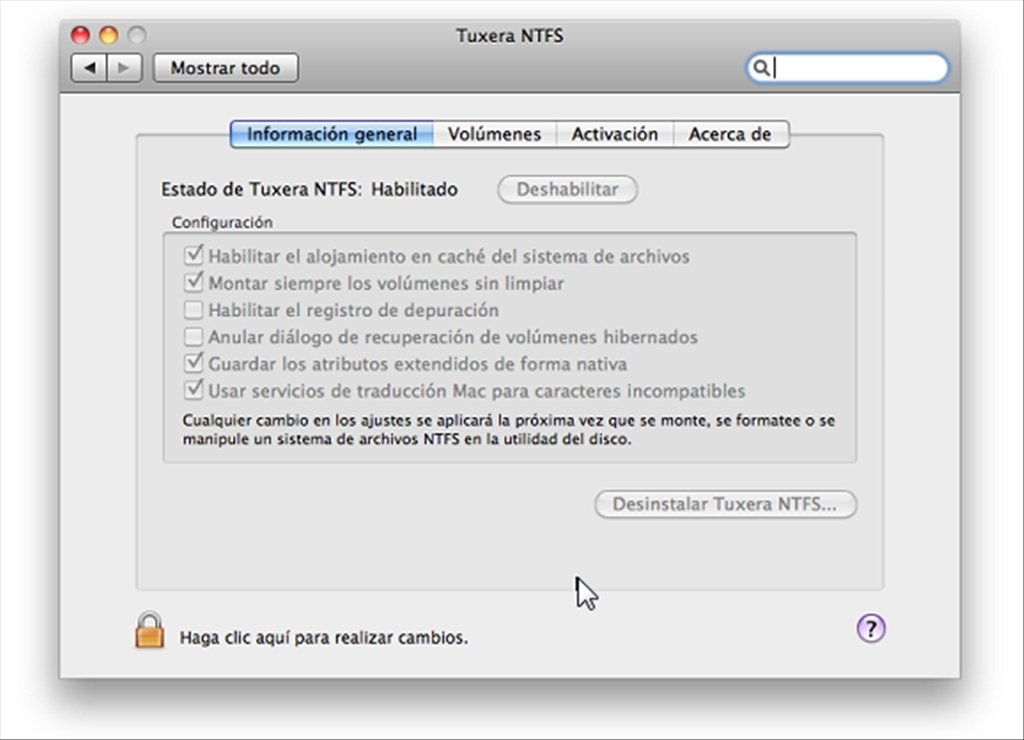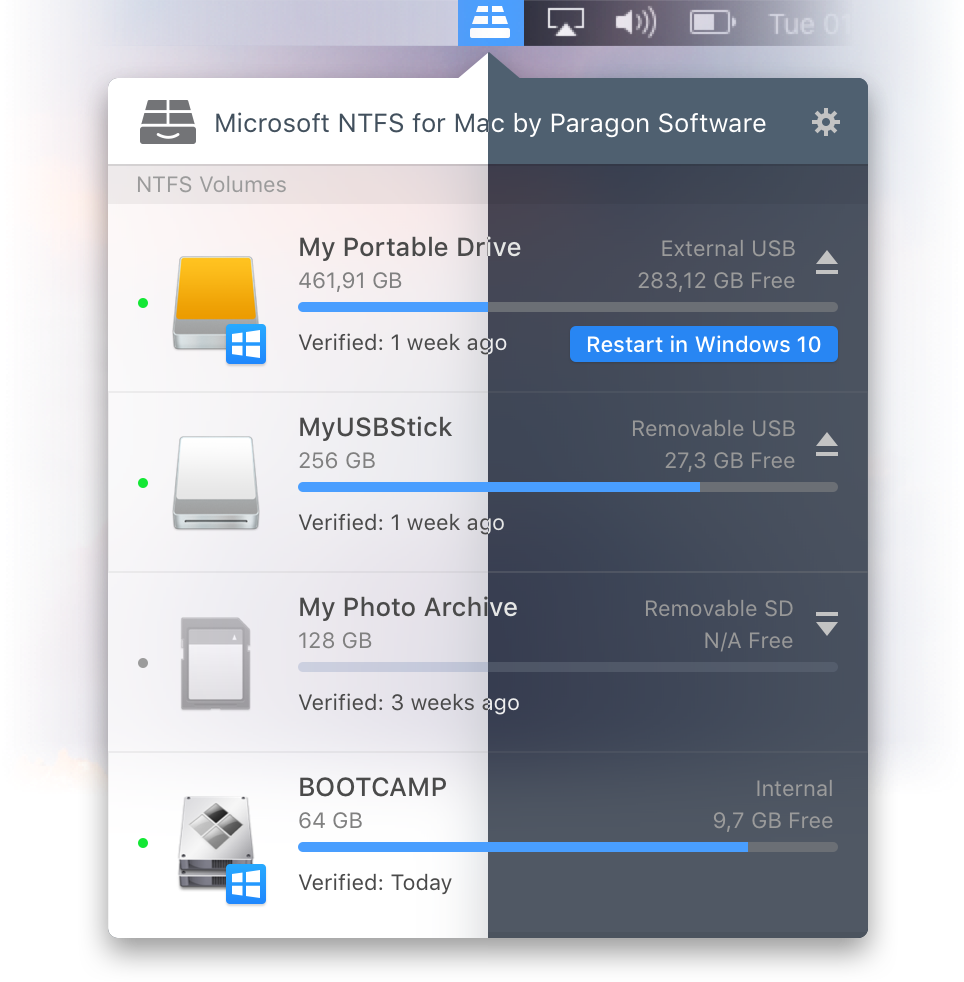
I grew up with NTFS. I was there when it was introduced with Windows NT, and I insisted on reformatting every Windows machine I ever got my hands on — wiping out stuffy old FAT32 — with a file system so much more capable and pleasing.
Yeah, OK, I was total nerd about the whole thing, I know. So it came as something of a surprise to me that I didn’t think about file systems when I was switching to the Mac.
This unique software tool covers all aspects of a Mac's computer life cycle, from. Sector-level backup through Snapshot delivers superior backup and recovery. Resize, change properties of HFS+, NTFS, ExtFS, FAT, and exFAT partitions. Microsoft NTFS for Mac by Paragon Software is a great upgrade to an exceptional cross-platform utility that’s easily worth the money, especially if you own the previous version 14, in which case this one’s free.

And I didn’t think about file systems when I took a terabyte hard drive from my old PC and put it in my Mac Pro. And I didn’t think about file systems when I first clicked around that drive’s contents in Finder. I did think about file systems when I tried to save changes I made to an old document that migrated to my Mac along with the drive.
I was rewarded for my Saving efforts with an unwelcome dialogue telling me I couldn’t write to the drive. And then the penny dropped. My big, new shiny Mac Pro was using HFS+ while that second HDD was formatted with NTFS. And then I had to go and have a lie down for a bit due to an acronym-induced headache. You’re unlikely to have experienced this access problem unless you have an external drive you like to use for both a Windows machine and a Mac. Until Apple (s aapl) gets around to building full read/write compatibility into its operating system (and let’s not forget Snow Leopard is right around the corner) we have to find third-party solutions that cajole our hard drives into getting along with each other.
One popular (and free) solution is: a reasonably simple, though somewhat fiddly, application that requires users mount their NTFS drives/partitions in order to have full read/write access to the data stored therein. This can become cumbersome if an external drive is improperly unmounted on another machine. It’s not impossible to fix, mind you, but not effortless by any means. If you need a simpler solution that offers transparent, and deceptively native, interoperability with NTFS formatted drives, you could try Paragon’s venerable (though horribly named) (or NTFSMOSX7 as I shall now refer to it because that string of characters is marginally less cumbersome than the full name). NTFSMOSX7 is a small download, at a little under 3 megabytes and, once installed, ticks away in the background. There’s no user interface or settings to tweak. This really is nothing more than a driver.
If you buy the full version of the software, the download will undoubtedly be larger, since the paid-for app includes Paragon’s MacBrowser software for Windows. I might have tested MacBrowser for the purpose of this review, but Paragon never responded to my emails requesting more information, so if you have used it, and have an experience to share, please add a comment at the end of the article. The only real problem I had once the hard drive was once again mine to use and abuse, was a conspicuous lack of Spotlight functionality. This is because, by default, Spotlight doesn’t index NTFS volumes. It’s not impossible to do, but it’s also not easy to achieve.

The Spotlight preferences panel is typically spartan, so it’s necessary to bypass the Spotlight settings GUI and get your hands dirty in a Terminal session. For those of you interested, by the way, the syntax for manually adding an NTFS volume (or any volume, for that matter) to Spotlight’s index via Terminal goes like this: sudo mdutil -i on /Volume/VolumeName Once entered, Spotlight will begin indexing your volume, which means it’s time for you to go watch some “Galactica” or “Big Bang Theory” while you wait.
Mac Ntfs Write
A lot has been made of the apparent (and the not-even-remotely-important) differences between NTFS and HFS+. While HFS+ was ahead of the game at a time when too many Windows users were still mired in FAT (no jokes, please), NTFS was, and remains, a sophisticated file system.
Superior Ntfs For Mac
In fact, it bests HFS+ in many ways. Overall, though, is it better? I don’t know for sure, and I suspect for 99 percent of everyday users the question “who cares?” springs to mind.
Sidenote: Exuberant Apple supporters — aka Wailing Fanboys — muddy the waters with their auto-hate for anything not intrinsically Apple, claiming time and time again on discussion boards that “NTFS sux.” Occasionally, a particularly tech-savvy zealot will talk about comparing streams and counting data forks and probably even get into a debate over which Enterprise Captain is the best. None of that matters so long as you can access your data quickly and painlessly, and, at least on the Mac, NTFSMOSX7 makes that possible. If you have to use NTFS volumes regularly but can’t reformat them to use HFS+, the $40 asking price for NTFSMOSX7 is perhaps not so steep in return for the convenience of seamless data interoperability. If, on the other hand, you want occasional quick-and-dirty access to an old NTFS volume and the ability to write data to it is not a serious concern, $40 is much too expensive for what amounts to a simple driver, and I’d suggest you stick with a free alternative. You can try NTFSMOSX7 free for 10 days by downloading it from the. You can see which Enterprise captain is superior. Chris Oddly enough, I just had to write to an NTFS volume yesterday, and I discovered that the mountntfs that comes with Leopard is capable of read/write access.
All it took was unmounting the volume with Disk Utility and then manually mounting it from the terminal: mount -tntfs -orw /dev/diskwhatever /Volumes/SomeDirectory Most likely RW mounts are not the default either because of the license issues or because it’s not stable, so I wouldn’t recommend doing this if you care about your data integrity. In my case I successfully renamed the volume and changed its icon with no apparent ill effects, but I didn’t particularly care about the drive in question. EdGracz Chris, that’s interesting news. I’m about to get my first Mac — a Macbook Pro. I have an external RAID drive loaded with all sorts of pix and metadata (from Adobe Photoshop Bridge). I did all that work under XP Pro, so the drive is NTFS formatted.
I’m sorry if this is a dense question, but would your unmounting/remounting solution let me access that drive from the Macbook Pro using Adobe Photoshop Bridge running natively under Leopard? Eventually I will make the complete move to Mac, but for a while I will work on both. Thanks for being patient with my question.
Hi IdleWanderlust, I’m not sure why the unbridled bitterness from you? Seems you have a wee chip on your shoulder, sir?
Superior Ntfs For Mac Pro

In any case, Microsoft.does. allow other OS’s to natively leverage NTFS compatibility if (and only if) the relevant licenses are acquired. Apple obviously aren’t in a hurry to pay Microsoft for licensing NTFS functionality in Mac OS, but we can always live in hope!
There is a strong argument that a licensing deal of this kind would be in the best interest of both companies; but I shall leave that to another article you might want to summarily rubbish at a later date!:-) Thanks for reading!
